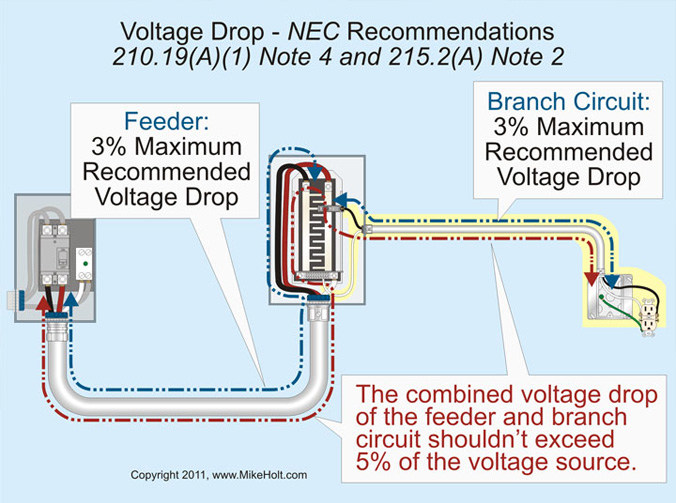
Voltage Drop – Problem or Perception?
By: Jack Thompson, PE, LEED AP and Mike Gentry
Have you noticed that your lights are not as bright as you would expect or that your computer screen seems to be wavy? Many people wonder why this happens and what to do about it. Could it be that you have a voltage drop problem? Every electrical circuit experiences voltage drop, as conductor properties and load will always produce this phenomenon. The real question is whether you have a voltage drop problem or simply the perception of a problem.
The National Electrical Code (NEC) suggests, through a series of “fine print notes,” that you adjust conductor size to accommodate for voltage drop. The code also goes so far as to recommend maximum voltage drop percentages for feeders and branch circuits, as well as a combination of the two. But what does this mean to the average user?
Since the NEC statements are performance based and not safety related, there is technically no enforcement process available. This, however, does not remove efficiency or performance factors from consideration:
- Lighting systems perform better and generally provide more output when operating at their preferred voltage level, which often has a specific range or tolerance.
- Larger branch circuits (higher loads) will benefit from a lower voltage drop through improved performance, reduced operational costs, and quite possibly a longer equipment lifespan.
Your utility provider delivers service within a specific voltage range. Likewise your equipment operates within a specified voltage range. A properly engineered and installed electrical distribution system is the best solution to avoid a problem. If you have questions about equipment performance or concerns with either real or perceived voltage drop, let us help!
